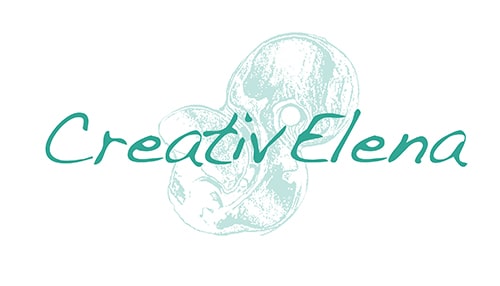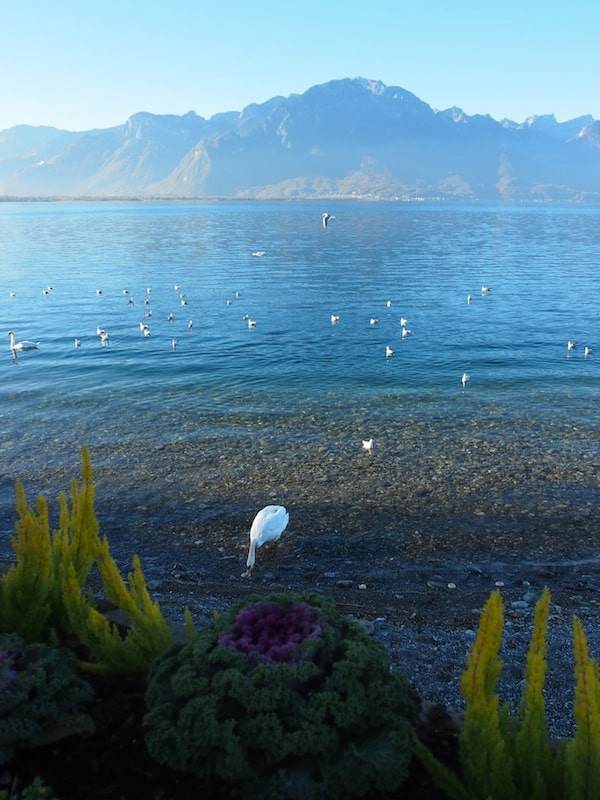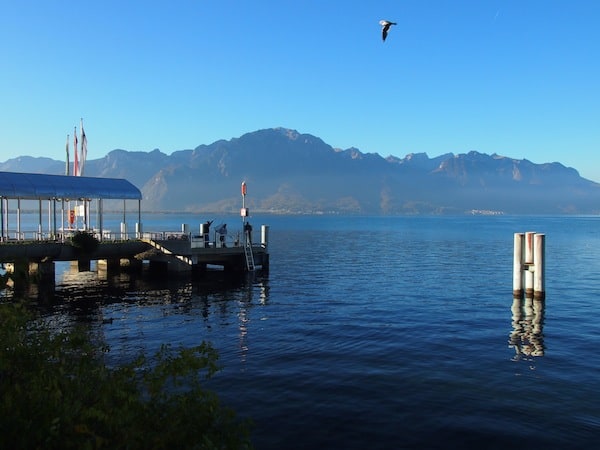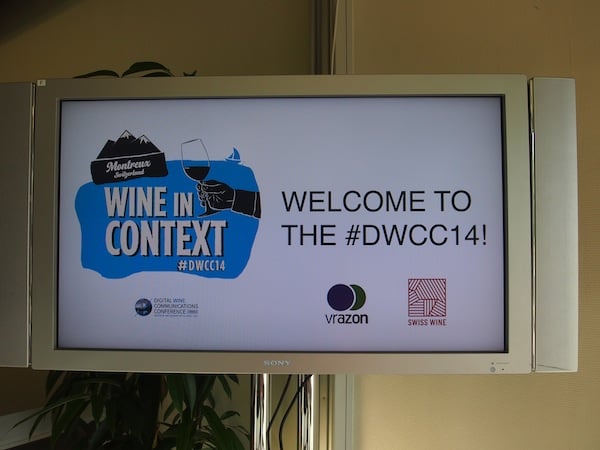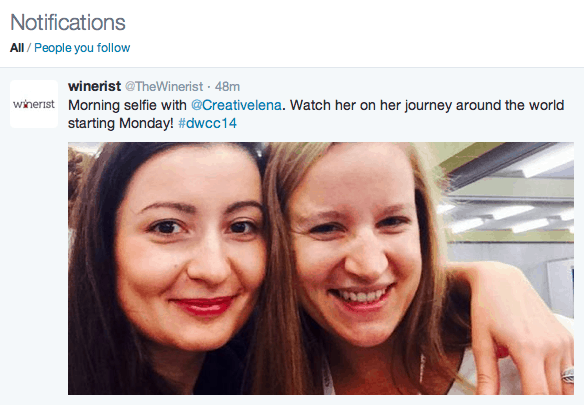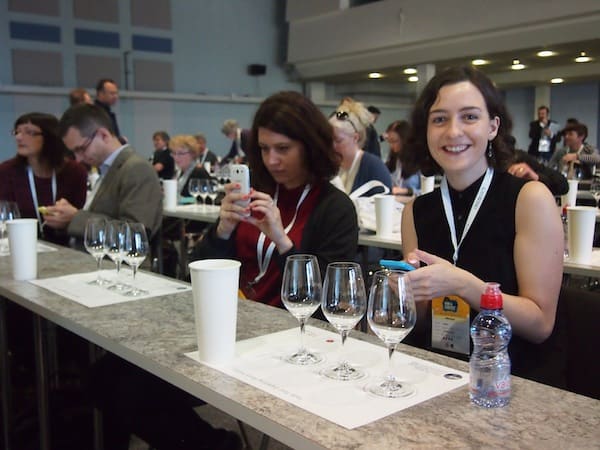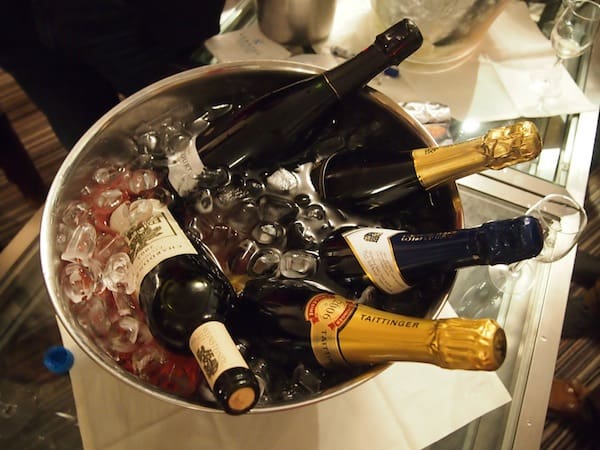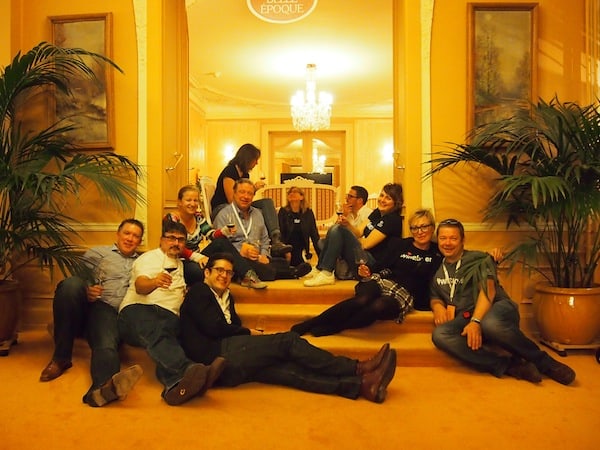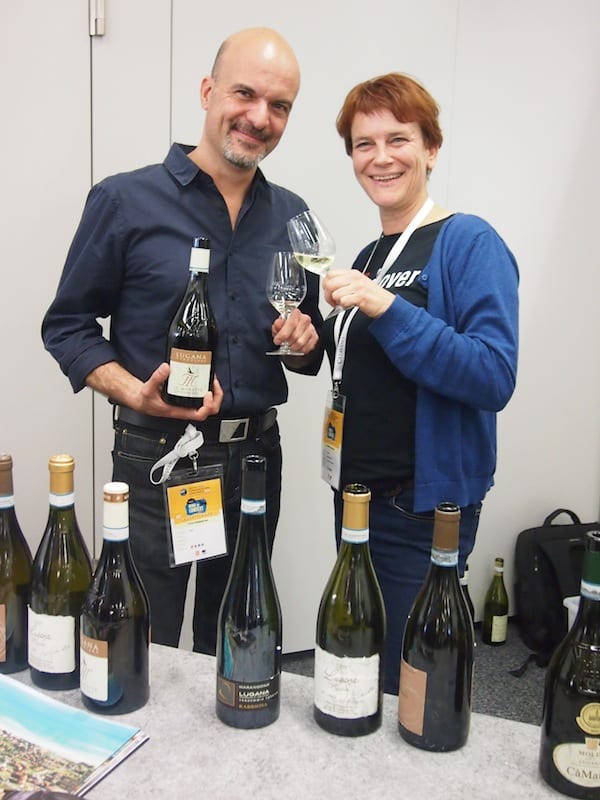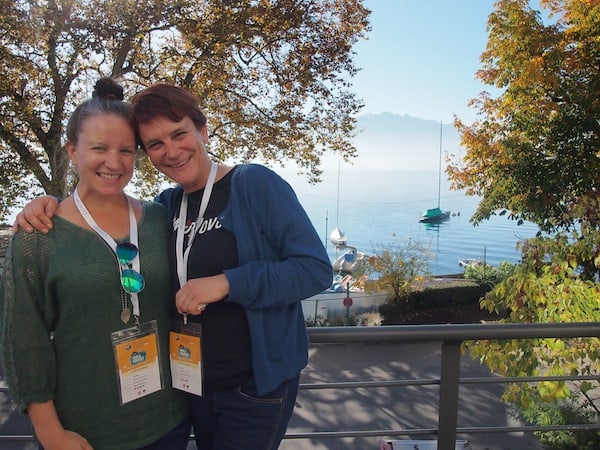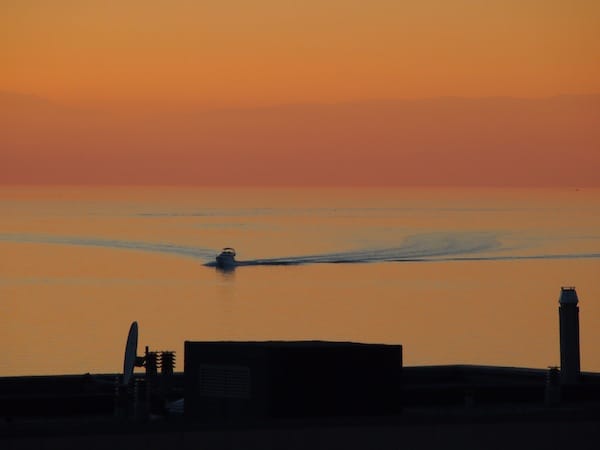Arriving in Montreux, Switzerland, where this year’s seventh edition of the annual #DWCC14 Digital Wine Communications Conference takes place, I feel both excited and a little intrigued. Have I gathered all my wine tasting notes & digital communications background as a wine travel writer? Do I feel I know enough about wine to make easy conversation? And how to behave at a “BYOB”?!
Turns out that no concerns are ever necessary here. The digital #Winelover Community is, quite frankly speaking, one of the single most welcoming and inspirational gatherings of people sharing a common love for … wine. Food. Travel. Culture. And context. Such also happens to be the motto of this year’s #DWCC14 conference, broadening the scope of digital wine communication to incorporate aspects of storytelling, travel writing and cross-industry marketing. Check out all information about the Digital Wine Communications Conference, its purpose & mission on their website here. I have come to the absolute right place despite being only two days away from starting a major round the world trip adventure, yet at the same time sensing, feeling, trusting that this is the right decision. That I just had to be here, because life, and travel, is all about making those connections. And what connections there were. Have a look at what we can all learn from top wine & travel knowledge in the context of digital marketing communications.
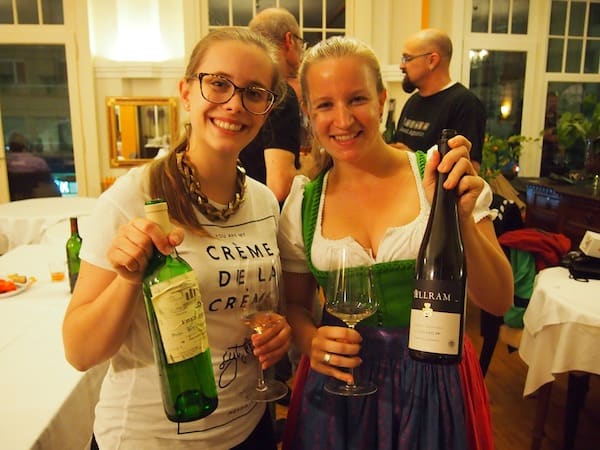
#DWCC14 Digital Wine Communications Conference in Montreux, Switzerland kicks off with a wonderful tasting event called “BYOB”, or “Bring Your Own Bottle”: I am representing the Allram Wine Estate of my very own neck of the woods, the Lower Austrian Kamptal wine growing district.
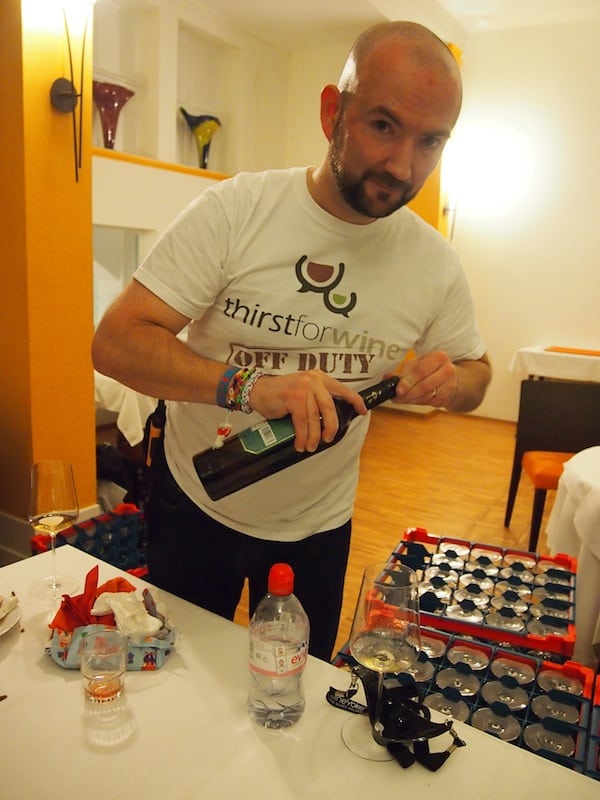
Finally meeting the mastermind behind the organisation of #DWCC14: Robert McIntosh & his #winelover team!

Pooling wines from all over the world in this first massive tasting event is a dazzling display of colours, tastes and preferences. Like potluck dinners: Grab what you get – only with (truly excellent) wines!
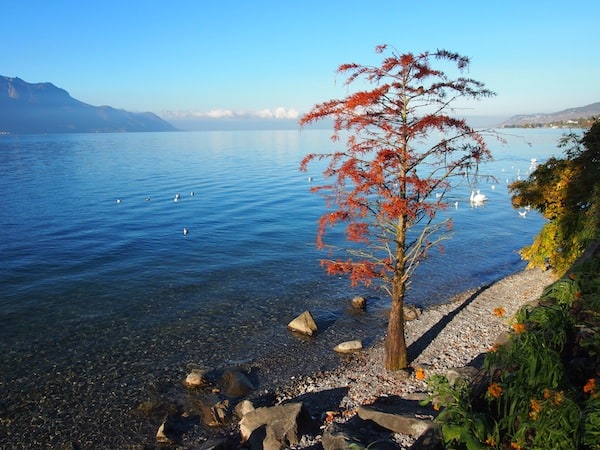
“Wine In Context”: The motto of the #DWCC14 conference as expressed by a beautiful reflection of Montreux during the Indian summer.
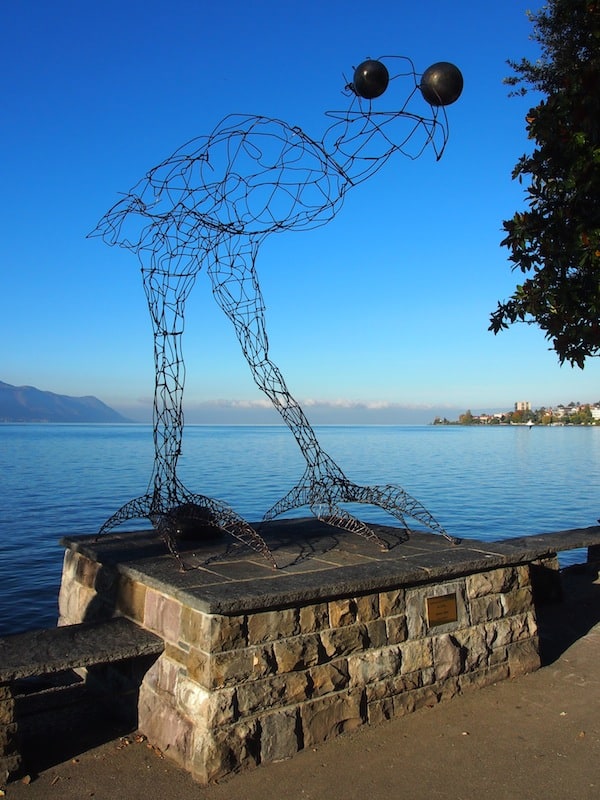
… nor there: Heading towards the conference venue, I am running late as being forever “distracted” by magical vistas such as this one. Birds of a (wine) feather obviously flock together!
#DWCC14: On Innovation & Wine in Context.
The first session of the conference carries on swiftly and feeds us great food for thought. Greg Lambrecht, founder of the Coravin wine business, explains that successful innovation always responds to an unmet need. “What is the problem you are trying to solve?” He mentions that every industry’s unmet needs are embedded in a so-called ecosystem, and that you have to understand that particular ecosystem when developing your (wine) business. Every business, unsurprisingly, also needs a strategy. “It fails if you don’t. Coravin, my business, has evolved from the need to drink wine from a bottle without pulling the cork. Luckily, I was really good at developing needles given my particular medical background.” Coravin, as Greg explains, expands options for drinking & serving wine, allowing you to try before you buy. “When we had our moments of crisis, and believe me, we’ve had them … we simply went back and fixed things. Then we put everything back into context, we went out on a launch tour, talked to people, the media, communicated to our multipliers. The world of wine is vast you see, the variety is near infinite. You have to understand that each market has a passionate core of consumers: Be honest and direct with those consumers, and you will win!” The conclusion he gives us furthermore is this:
- Understand the particular need you are addressing in your business.
- Understand your specific ecosystem.
- Think about the stories you want to communicate. Is it stories about the producers, stories about the distributors? What are they interested in that you might be able to provide?
- And finally, innovate: Produce original work that addresses the need in the ecosystem you choose.
- Be creative: Find a way to turn that dispassionate group of people into true wine enthusiasts!
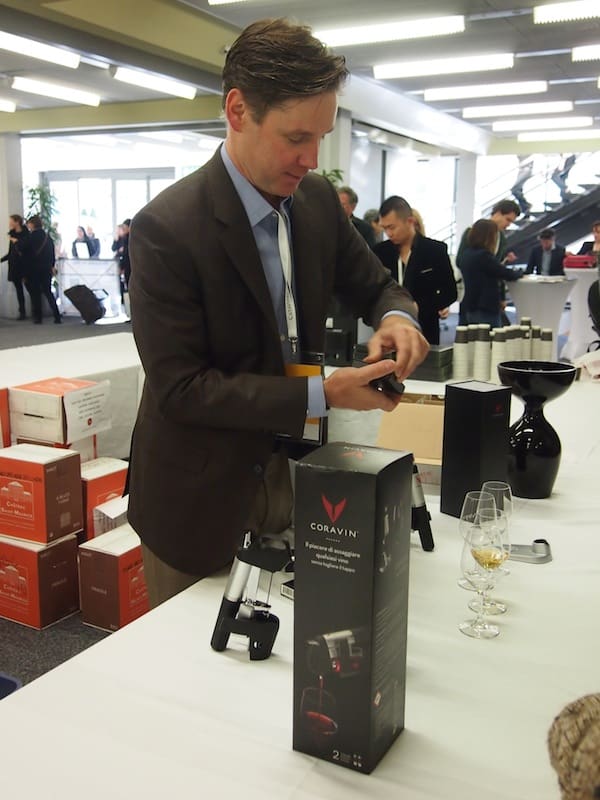
Meeting & listening to Greg Lambrecht talking about being totally innovative in the wine industry with “pins & needles” is a great way to start #DWCC14.
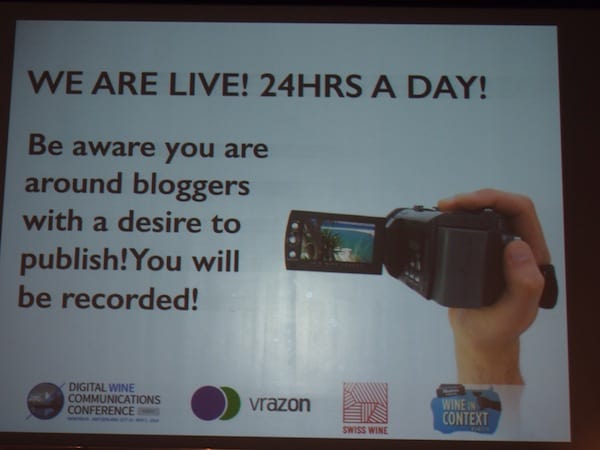
Get ready for more: Some things are sweet & familiar as a person having attended many travel blogger gatherings & conferences before.
#DWCC14: The Tastings – Exploring Flavour Biases!
As this is my first time at the Digital Wine Communications Conference, I find myself smiling at the fact that the second conference session is … already a wine tasting. Of course. And a blind one, at that.! Me & my fellow 200+ attendees are given instructions by tasting gurus Robert Joseph & Maurizio Ugliano to “taste reasonably quickly. Rinse your glasses so we can continue pouring fresh samples. Vote using the DWCC14 App! (The Brave New World of the digital age greeting us there). Make detailed notes for when we actually talk about the wines. And please be quiet: This is a silent tasting with lots of discussion following. We want to learn from what you have to say!”
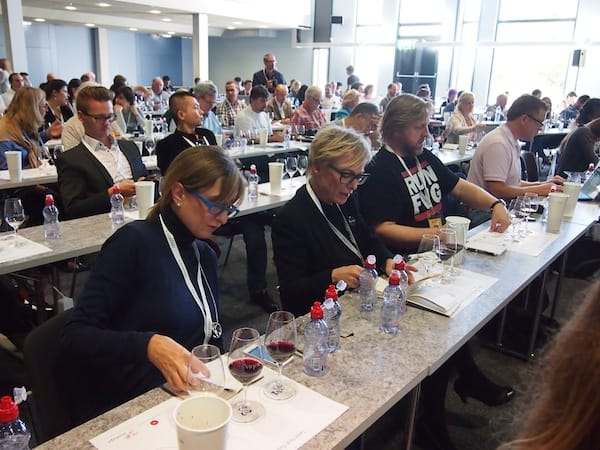
We taste along the following category tags: Complex. Dry. Fresh. Fruity. Industrial. Rich. Simple. Terroir. And other, indicating a potential fault. There are two whites, six reds & more wines to finish …!
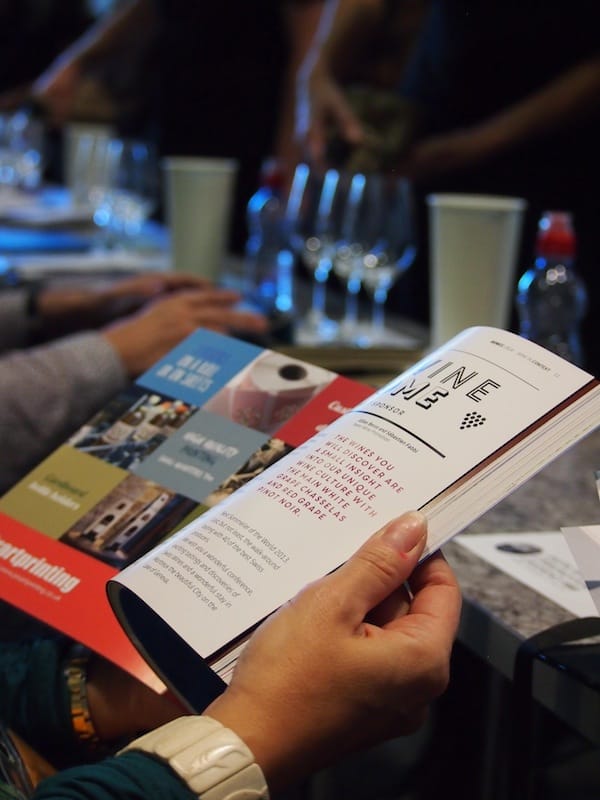
“Wine needs to breathe.” (Louis Pasteur, 1866). The degree of breathing can make a huge difference to the final outcome, as exemplified in the first tasting: The first two white wines are actually the same, bottled on the same day from the same vintage (Paso Robles 2012, California) but allowing different oxygen levels for aging the wine.
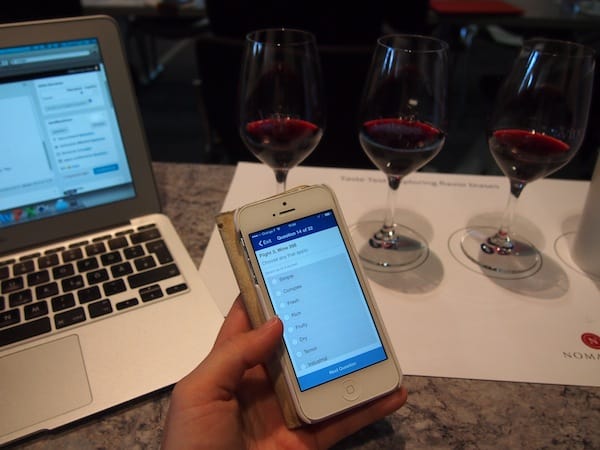
All wines may be separated into two broad categories: Sweet and savory. This I learn depends on the grapes, where those grapes were grown, as well as the intent and techniques of the producer. Happy learning curve here at #DWCC14 – plus the app is fun & handy using it on my iPhone5!
#DWCC14: Communication in Context. Of “Plugging Your Passion Into Your Business Model”!
Christian Payne, a contributor to Documentally.com as well as to The Guardian in the UK, is our first storytelling speaker of the day at the #DWCC14 Digital Wine Communications Conference. He immediately wins my attention when delivering the following sermon: “Culture eats strategy for breakfast every day. The Internet has turned the mediascape over to its users. Consumer behaviour is changing faster than we can think, let alone keep up. Three key disruptors – mobile, social, visual – have changed and are changing the way we see and experience the world. And consumers want all three of them – in realtime! The top-down mechanism of the news business has been broken.” His advice, therefore, is to “plug into the hive mind of people asking realtime questions while live streaming news!”
So what are skills that modern storytellers need? Unsurprisingly, the answer is that “you need all potential skills: Taking pictures, taking photographs, writing, digital communication & sharing … When you are writing a blog, you are planting a seed for a story that lingers and continues to grow thanks to reader interaction.”
Think of your stories as Wikis. Nurture the comments. Harness that inspiration.
So what is a story? “Data plus time equals a story. Aggregate. Curate. Create. A compelling story is a tale that inspires … ultimately, a tale that makes us emotional. Ponder that famous message: Make me care! Why should I care? I do care about someone who creates a rapport and who connects to his or her audience as opposed to someone who just talks. Ask yourself this: What is the ‘meta-story’ behind the story I am sharing? And use tools such as Google Alerts for the content you are creating & curating!”
More tips Christian has for us are these:
- Sow a seed of serendipity: You might never know where each one of your messages, or stories, are going! Small talk invariably leads to big talk.
- Think authenticity as the ability to let go of who you think you should be in order to embrace who you are.! 😀
- Think multi-skilled over multi-tasking: Create & maintain your community and have that community migrate with you, choosing the very (digital communications) channel that happens to be important at each time. Do not become dependent on either Twitter, Facebook, etc., but curate your content and work with whatever works for you! Make the Internet work for you.
- Take your narrative and plug it into the digital content: This is effective networked storytelling. Tell a story that has a reveal. Pay it off! Tell what your story is about in the first five seconds of making a video, for instance. Keep that video message short. Do not use zoom! Keep the camera steady. Paint with the light: Make sure you have all the light you need. Pay attention to sound. Be interesting, be different, be funny!
“Create, curate and share stories. Build a toolkit of skills. Nurture your networks. Stories become seeds of serendipity. Stay curious. Nurture that curiosity. Embrace ambiguity. Whatever cannot be networked will become less important. Good content always finds an audience. But without context, it is just more noise. It is not just the Who & What any more. It is the Why & When & Where – and always in context!”
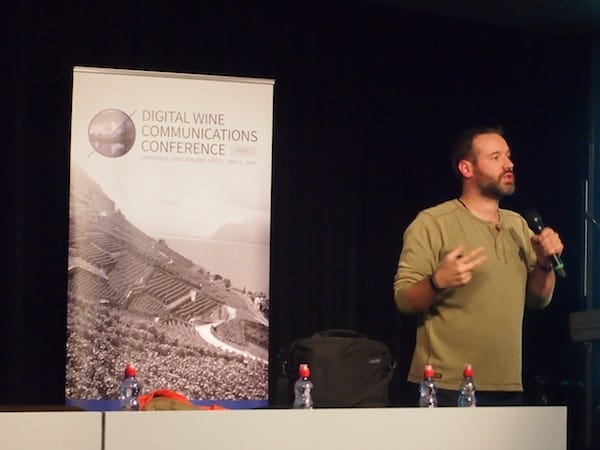
Thank you so much, dear Christian, for sharing all that knowledge and experience here with us at the #DWCC14!
#DWCC14: Communication in Context. “Is Your Wine Communication Fit For Purpose?”
And yet, there is so much more to the art of storytelling, as the next round of speakers at the #DWCC14 Digital Wine Communications Conference in Montreux are proving once more. This session kicks off with Robert Joseph and Torben Mottes. Robert mentions that when communicating, not only is it important who we are communicating to, but also how our readers are communicating between each other! He emphasizes that one should always focus on creating content, apps or websites that are approachable, in a way the actual community we are dealing with is able to comprehend.
Apps or different platforms are ways for people to create a community other than a website. Ask yourself whether the knowledge the audience needs is actually available at the decision point? Once you have traced the customer journey, fine tune your communication accordingly: Are you talking to “wine experts” or “wine enjoyers”? Educate and entertain your readers, allow them to pick up “nuggets of information” as they are taken through the inspiration and entertainment you provide. Make sure you tell human stories about real people. Care and make people care. Write in short sentences. And KISS – Keep It Short and Simple!
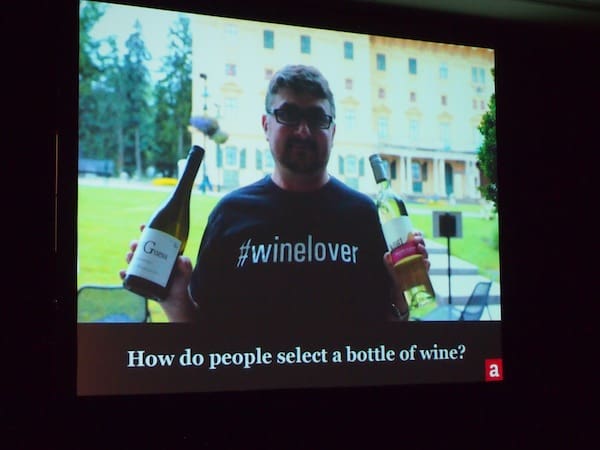
Short & simple: How do people actually select a bottle of wine?, asks charming Luiz Alberto, one of THE founders of the actual #winelover community who I am so pleased to meet here at #DWCC14!
André Ribeirinho, of Adegga Wine Market, moves on by talking to us about experience-based wine communication on the example of his organising the Adegga Wine Market Experience. André is a passionate speaker full of enthusiasm, as happens to be the case with most of the Portuguese wine & food lovers I have met on my travels!, and I am quoting him when I say, “… so how do you end up making your choices? You need to have some kind of information. And that is a challenge of the wine business. One way to achieve this, though, is by creating memorable wine experiences that make people connect & care. With Adegga, we always focused on the consumer in the organisation of our Adegga Wine Market experiences.
Our (secret) selling point is that we are face-to-face. That we are informal. That we act as friends. That we have a premium location. That we use a language that consumers are used to on a day-to-day basis, such as food!
And then, we innovate. We have come up with something called the ‘smart wine glass‘, meaning that the glass you are holding at one of our Adegga Wine Market experience events gets associated with your email … By the time you get home, you get a list of all the wines you liked at the wine tasting, taking down the barrier of wine information from the relation with the customer! Besides, it also takes the stress out of getting tipsy, because remember – after all, it is a wine tasting event that is meant for you to enjoy and relax …”
Help your customers enjoy wine more: They’ll need new bottles for that! Incentivise people around experiences rooted to your product. Make people fall in love with your brand!
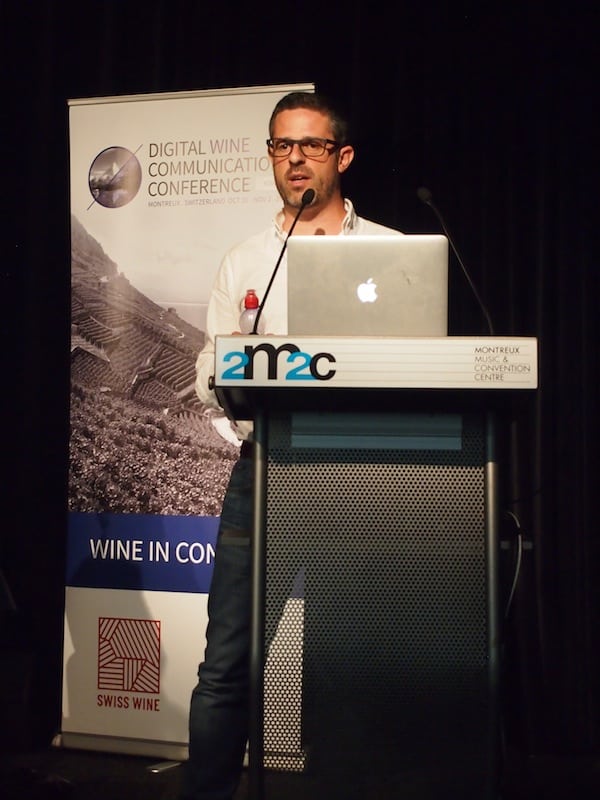
André Ribeirinho, of Adegga Wine Market experience, delivering a passionate speech about creating “wine communication fit for purpose” …
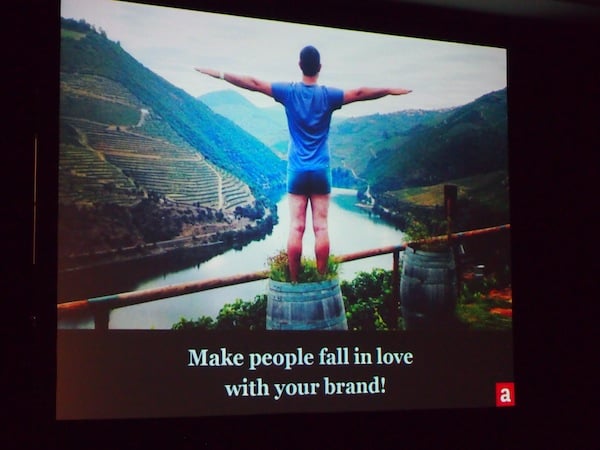
… besides emphasizing his strong position in the Portuguese wine business that he has come to love, shape and develop through his business! Well done André. Can’t wait to experience one of your Adegga Wine Market events one day!
#DWCC14: Disrupt Wine Talks!
The #DWCC14 Digital Wine Communications Conference has this very interesting format of closing for Day One of the conference. It actually allows six most compelling speakers 8 minutes and 24 slides to work with in terms of vivid storytelling on one single keyword topic. Let me recapture some of the most beguiling quotes I have gathered there.
COMMUNITY.
“Fame is changing on YouTube. Audiences are passionate. Involved. Through liking, sharing, and commenting, YOU as the consumer are telling what is fantastic. The tyranny of the TV schedule has disappeared. On YouTube, NICHE IS THE NEW MASS. A video on how to open a bottle of wine without a cork screw easily has potential to hit millions of views. … People are looking for three fundamental things on YouTube: Entertainment. Search. Inspiration. Create content that meets those needs, and you will win. Everyone is interacting now. And always, always, remember how that first video you ever watched made you feel! That is how successful bloggers and communicators treat their audiences!” (Hamish Nicklin, Agency Sales Director at Google UK).
DATA.
“Success is driven by being unbelievably focused. PAY ATTENTION. Keep track. The problem we face: Wine is scary. The solution we came up with: CellarTracker = Data married Wine. If you have a hammer, the world looks like a nail: Focus on what you know. I knew what I could do – information administration, and what I couldn’t do – sell! So I stayed focused on publishing clean, simple data that does not overwhelm and overcomplicate it for the consumer.” (Eric LeVine, formerly Microsoft & now CellarTracker, the largest database of community tasting notes in the world).
INTEGRATE.
“Information and technology are taken for granted. The web has transformed our expectations. Mobile search is prolific: Ask a question, and somebody will answer it. So how do brands successfully integrate consumers? The answer is this: Through emotional, personal, branded stories. Integrate the consumer voice into the brand, even allow and invite them to create a brand out of the community.” (That reminds me of the #CaribouInspires campaign I learned about during the Social Travel Summit #STSLeipzig this year!). Thank you for this interesting talk, dear Jennifer Burke!
STORY.
Now, Gabriella Reynes Opaz merits a special mention here. Not only does she choose, in her Disrupt Wine Talk, to present a story on a city that I have grown so fond of for many reasons – she also does it in a way that makes your heart beat fast and your skin react with goose bumps. Gabriella is easily the most compelling public speaker I have ever had the pleasure to witness in my whole life, and deservedly has already won many awards and speakers’ contests at that.
“Let me talk about the story of Porto. There are about 1.4 million people living in the greater urban area of Porto. Porto is one of the oldest European city centres. It is a UNESCO World Heritage Site since 1996. Port wine is named for Porto and has helped shape the city’s image … Actually.”
She takes off her glasses and moves to the front of the stage. “There is another way to talk about Porto. And that is … my story of Porto.” What follows is a most memorable, highly emotional and ultimately personal account of her first arrival to the city of Porto, and how meeting this one special person turned everything around for her. Another form of storytelling I can relate to in the most literal way possible. And what a beautiful story at that. Check out Gabriella Opaz @Catavino, her food & wine tour business in Portugal & Spain for more!
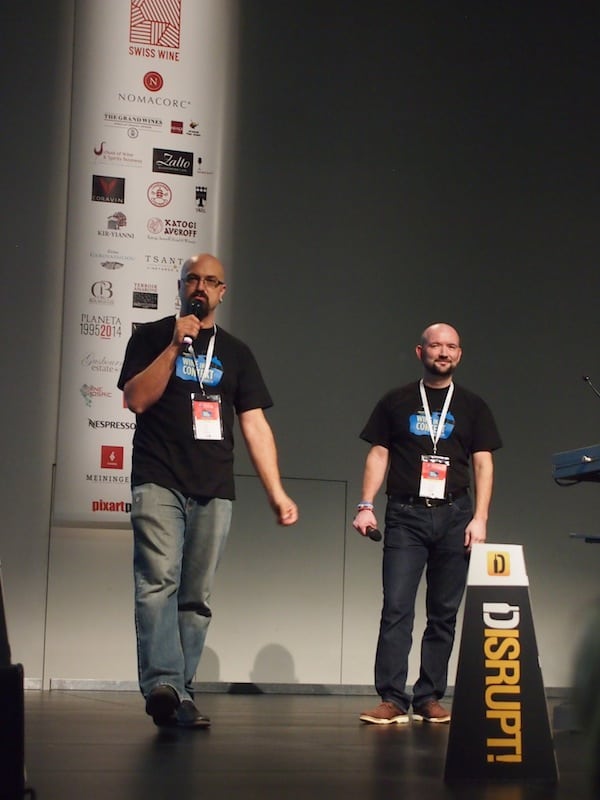
Ryan Opaz & Robert McIntosh, the “founding fathers” of the Digital Wine Communications Conference, are setting the stage for the Disrupt Wine Talks series.
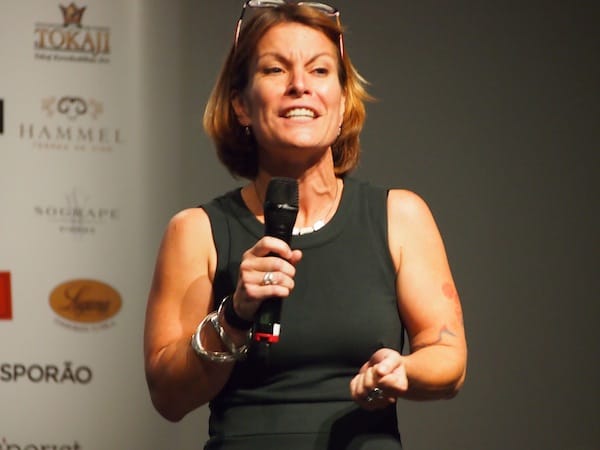
I just love Gabriella’s compelling, straight-to-the-heart and very beautiful, mastered art of storytelling. WOW. You are amazing, dear Gabriella! What an honour to be here listening to YOU!
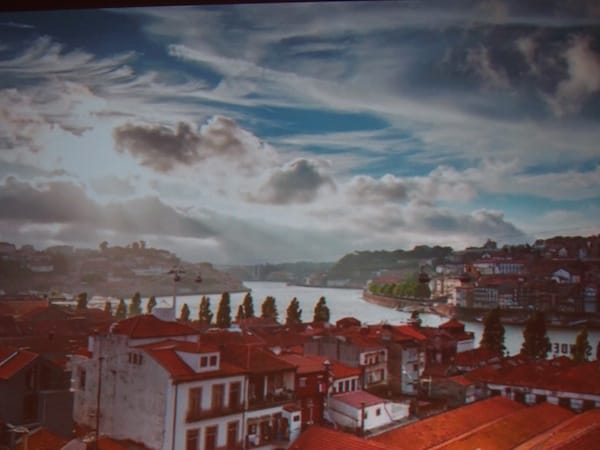
An image of Gabriella’s light-flooded, happy Porto, thanks to meeting first one, then many inspirational people in the second-largest Portuguese city …
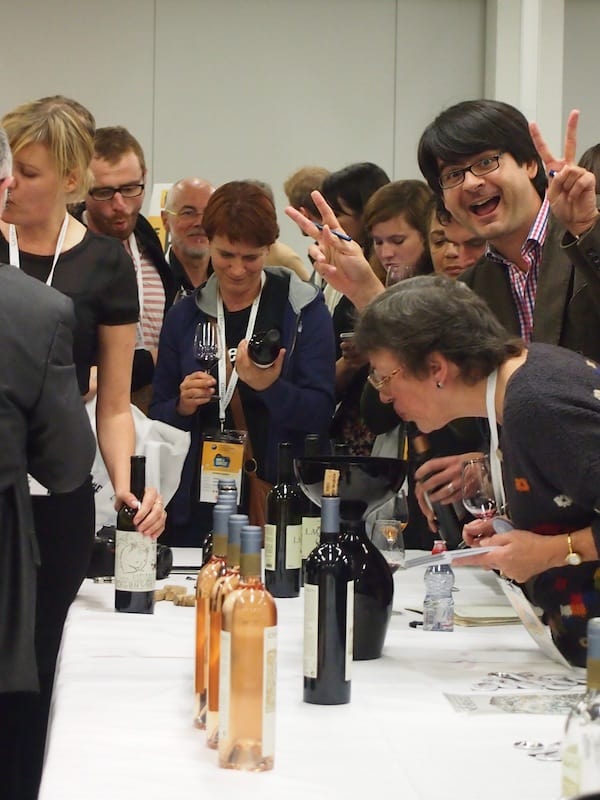
Right after Disrupt Wine Talks and all the emotions connected with them, it is back to basics – more wine tasting at #DWCC14 with these tremendous wines from Georgia !!
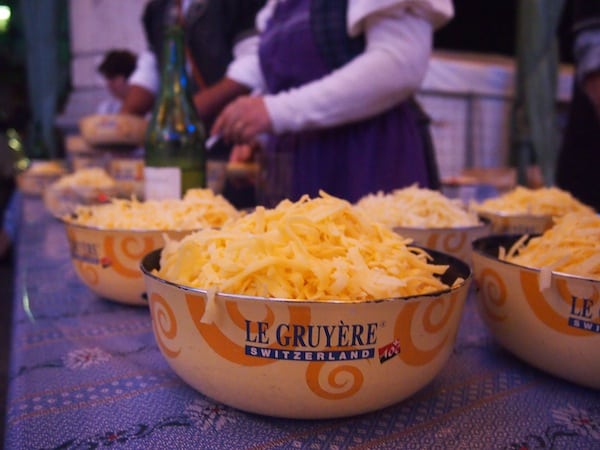
The fun continues at night, as we are spoiled to a real Swiss cheese fondue featuring famous Gruyère & Vacherin cheese varieties …
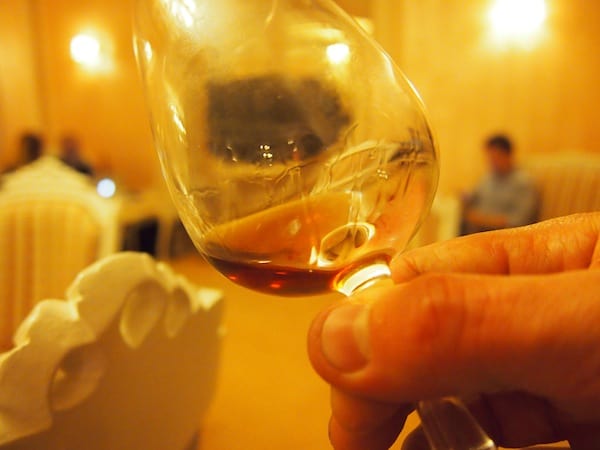
Just a little later, I find myself speechless for the second time in just a few hours. André Ribeirinho has brought with him a bottle of 1865 Port Wine, A WINE THAT IS 150 YEARS OLD !!! And I am freakin’ allowed – INVITED! – to taste it … once. Twice. Even three times! Can you believe it ?!? I still can’t. I feel so honoured. This is special. A once-in-a-lifetime-moment. WOW. THANK YOU SO MUCH for this, dear André!
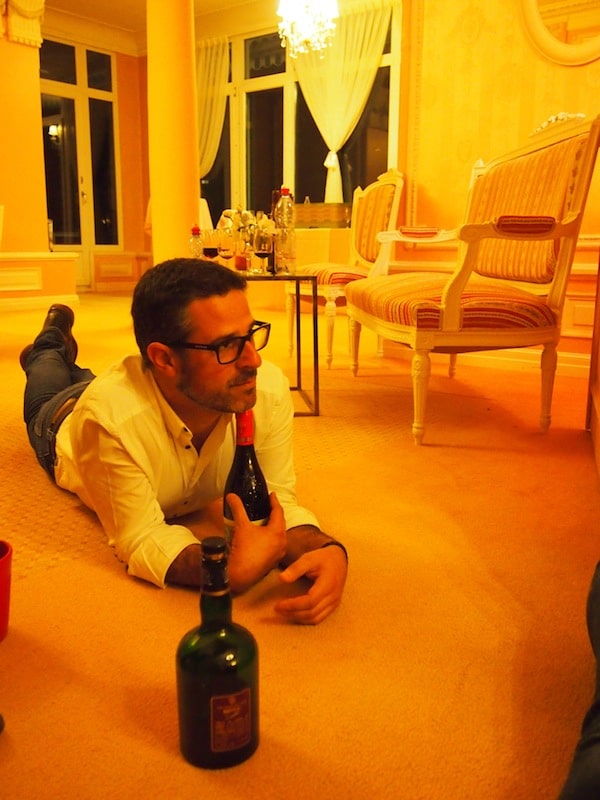
Late night conversations at #DWCC14: “This is how we do it. It is called the #Winelover Suite, room number 1618.” What this actually translates into is … 😀

… a strong feeling of connection, friendship, and the right people coming together at the right time celebrating some of the best wine in the whole world, all sharing the same sense of appreciation and joy. Thank you, dear Luiz, for making me a part of your beautiful #Winelover community!
Note: I am still completely blown away with tasting that Port wine … Harvested in 1865. Bottled in 1870. Decanted in 2014 … The smell alone. How many times have I sunk my nose into the glass, invariably closing my eyes, as a perfectly rounded up aroma hits me, carries me away, unique and ever so special in its note and character? The actual wine itself, it is … so calm. Complete. Round. A unique taste, as if time-travelled through the eons of wine production, and yet still fresh at that. A wonderful Port wine. Your friends at Niepoort in the Douro Valley must love you André. Very much. This has no price to it. Once again, I feel immensely honoured by your unconditional sharing of this wine with your friends in the #winelover community and … me. All of us, then. Thank you. OBRIGADA. A day to remember for the rest of my life !!!
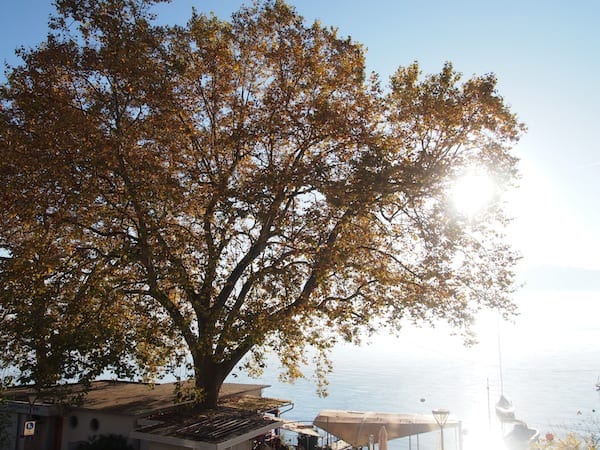
Tasting 19th century Port wine by the lakeside shore of Montreux in Switzerland with my new, beautiful friends from the #winelover community from all over the world, makes time & space cease to exist. A moment to remember … Magic happening at #DWCC14 !!!
#DWCC14: Wine Culture As A Route To Larger Audiences.
“Beauty is due to harmonious relationships among the elements of a composition rather than the elements themselves.” On the second day of #DWCC14 Digital Wine Communications Conference, Stylianos Filopoulos, the director of WineInModeration.eu, talks to us about the importance of diversifying wine culture: “Wine. Art. Architecture. Food. It is the harmonious relationships of wine with people that make wine such a special experience. Wine inspires innovation! There are still so many stories to share – and always one particular way to appreciate them.” True that!
Sally O’Brien then goes on about broadening the scope of “too much detail in wine writing” by opening the floor for … travel writing! I beam at her, having finally found my ally in all of this wine world! Make sure you check out SallyOBrien.net travel website & Twitter account @SwissingAround!
So what is “wine culture”, if not life around the way wine is produced and lived in a region? There are endless possibilities for angles to your stories! If you are interested in something around wine, others will be, too. That is where your story can expand from. Consider writing as “starting with a flower”. At the centre, you have the pollen. That is the wine. It draws the birds and the bees. So how do you get broader, i.e. get people to the pedals? Tell stories about art, music, or architecture! And bring this knowledge to your audience. They might not find it without your help. If you build it, they will find you through the search engines. Put wine in context! It enables you to ask more questions: ASK AS MANY QUESTIONS AS POSSIBLE.! Get personal with people. What is their story about running the vineyard? Where do they eat? Who do they work with? The bigger the story, the more content you have to play with. It broadens your base of readers. Different interest points attract more populars away from only wine geeks. People travel to learn, to pursue interests, to see family & friends .. and wine features in many different types of travel. Wine tourism is the focus of many journeys. Take the experience of a wine region for people who might never go there by integrating the cultural context in your writing and publishing. The best way to explore wine, and wine culture, is with FOOD. Many (European) cultures rely on food and wine to get their messages across.! Tap into that. People love to LEARN, they love to hear what the locals do, to avoid faux-pas: Share that! Give them that extra, specific knowledge that allows them to be as close to the locals as they can be. Wine is cultural heritage, and gives a sense of identity for the local population. This is attractive to visitors. Suggest themes or tours, like walking tours or food tours, that readers can follow, and they will be immensely grateful for your help and expertise.
Wow. Thank you so much for this speech, dear Sally! Yes to all, is all I can say. You’ve got it!
Further notes from this session about wine culture as a route to larger audiences moderated by Ryan Opaz can be found here:
- Record as much as you possibly can. Take as many photos as you possibly can. Everything can become content!
- Consider how people travel. In groups, solo, as a road trip? Keep this in mind in your writing and publishing work. Talk to tourist offices, do your homework, make your market research.
- Keep it authentic. Stay close to, and share your enthusiasm! People will always feel that. 🙂
- Focus on content and people stories: Passion and desire to make something different in the world is incredibly appealing. Get that message out there! If it engages the audience, people will want to read about it.
- Add that personal touch! There are so many ways to tell a story. Reinforce and bring new people in through different angles.
- Talk about everything else around wine, such as travel, recipes, food … Google has a whole search index for recipes.! If you add recipes to a blog post about wine, it will tap into a whole new stream of search engine results!
- And finally, the key message is DIVERSITY. Wine writing needs to focus on the cultural context of the wine. Set the scene for your readers, create compelling emotions, then draw them in.!
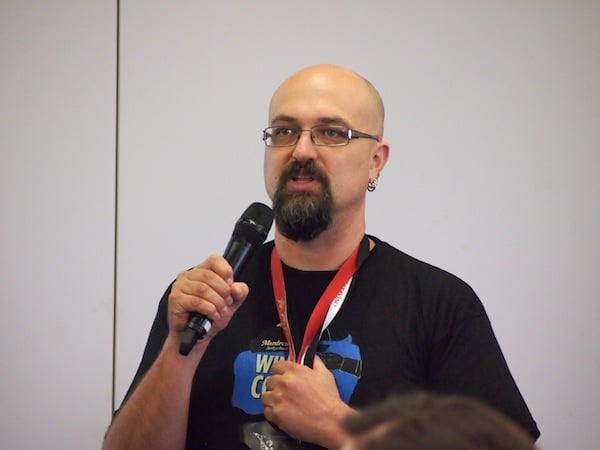
Ryan Opaz moderating one of the last sessions at #DWCC14 this year, on broadening the scope of wine writing in the context of the whole wine culture.
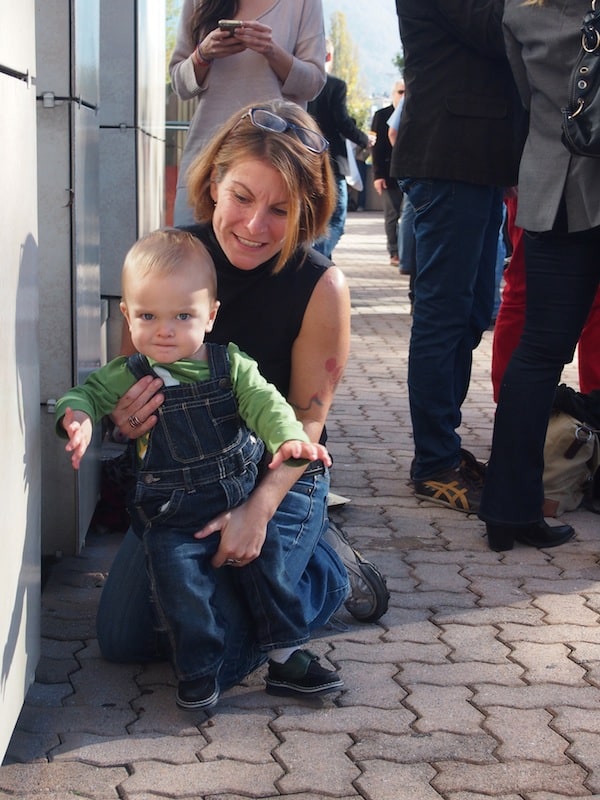
Meanwhile, lovely Gabriella, his wife and his son Mica, are out in the sunshine enjoying themselves … this, too, is #DWCC14 – a whole big family gathering!

… and grows: What a beautiful end to a most inspiring two days in Montreux, Switzerland! Thank you so much everyone for joining #DWCC14 : You all helped turning this into an immensely meaningful, memorable experience: For me & for all of us, I believe!
And the happiness continues to grow – check out this video to build your anticipation!
[su_youtube url=”http://www.youtube.com/embed/Dw_mxbIkCKo” width=”800″]
